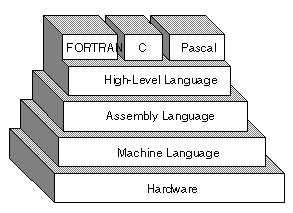FORTRAN Full Form | What is FORmula TRANslation
What is the full form of FORTRAN
FORTRAN: FORmula TRANslation
FORTRAN is the first high level programming language developed by John Backus in 1957. It was basically designed to write programs for high-performance computing and is mainly suited for numeric computing scientific computing and scientific applications that involve extensive mathematical computations. The main motive behind its designing was to translate math formulas into code.

History
Before the invention of FORTRAN, programmers used assembly/machine code to develop a program which was excessively difficult and time consuming. This led to the invention of FORTRAN which was simple to learn, machine independent, makes mathematical calculations easy, and is suitable for all type of applications. Since it was so easier to code, programmers were able to write their programs 500% faster in FORTRAN than the earlier ones.
FORTRAN IV and FORTRAN 77 are the most common versions of FORTRAN. FORTRAN IV became a USASI standard in 1966 and FORTRAN 77 was approved by ANSI in 1978. In the early 1990s, a new ISO and ANSI standard for FORTRAN, called FORTRAN 90 was developed.
Features
Some of the key features of this language are as follows:
- Simple language: Easy to learn and understand.
- Machine independent: A program can be transported from one machine to another machine.
- Expresses complex mathematical functions: It offers various natural ways to express complex mathematical functions.
- Efficient execution: Only around 20% decrease in efficiency as compared to assembly or machine code.
- Storage allocation: It allows programmers to control the allocation of storage.
- Freedom in code layout: The programmers don't need to layout code in rigidly defined columns unlike assembly or machine language.
DIALECTS
- FORTRAN II
- FORTRAN III
- FORTRAN IV
- FORTRAN 66
- FORTRAN 77
- FORTRAN 90
- FORTRAN 95
- FORTRAN 2003
- FORTRAN 2008
- FORTRAN 2015
Application
- Number crunching: Easy to solve algebraic problems.
- Numeric computing
- Scientific computing